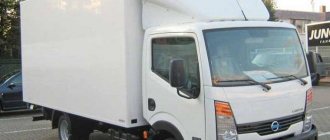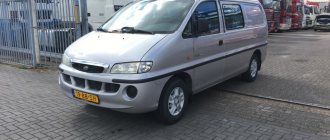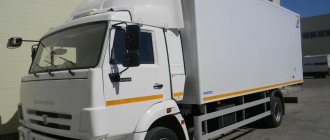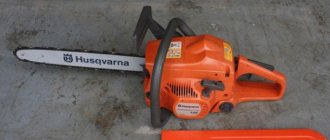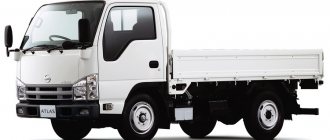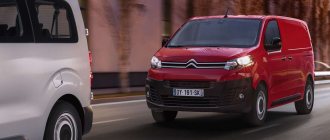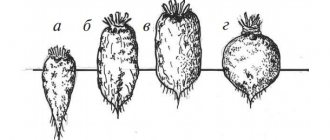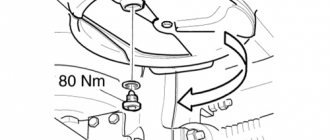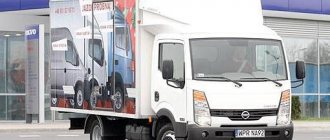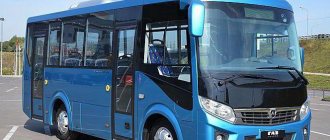Design
If we talk about the version that is currently being produced, it has a good design. Externally, the Caravel features recognizable features of a cargo Transporter. However, this is no longer a workhorse. The design is both modest and elegant. At the front there are strict optics with LED running lights, a massive bumper, and a wide grille. The car is also decorated with chrome elements. 16-inch alloy wheels are installed. In general, the car has a strict and at the same time not pretentious appearance. Many car enthusiasts liked this design.
But what do owner reviews say about the body of the Volkswagen Caravelle? The main disease of all “Transporters” is corrosion. Unfortunately, this disease “migrated” to Caravella. According to reviews from owners, the Volkswagen Caravel (gasoline and diesel included) has a thin paint coating. Chips appear after a couple of years of use. And if the defect is not corrected in time, corrosion can be expected.
Owners advise regularly washing the underbody and arches to remove salt in winter, and also treat the body with wax. This will slightly delay the rotting of the car. But if you think that only Caravella has this problem, then you are mistaken. Its direct competitor, Mercedes-Vito, also has problems with corrosion.
Dimensions, ground clearance, cross-country ability
The car has impressive dimensions. So, the length of the body is 5 meters, width – 1.9, height – 2 meters. The ground clearance is 19 centimeters. The only exception is the Trendline version. By the way, it is basic. Here the ground clearance is one centimeter more.
Among the features of the Volkswagen Caravelle T5, owner reviews note the presence of an all-wheel drive system. It is based on the Haldex interaxle coupling. But all-wheel drive is not available on all trim levels.
According to reviews from owners, the Volkswagen Caravelle 4 x 4 confidently overcomes areas with mud and deep sand. In the event of slipping, the rear axle is blocked almost instantly - the car does not have time to bury itself. A four-wheel drive vehicle shows the same thing in the snow. The car confidently paddles its wheels and can climb out of any snow trap.
Salon
Let's move inside the minivan. Getting to the driver's seat is very easy, thanks to the convenient footrest and handle located on the rack. The seating position in the car is quite high.
But in other respects, the Caravelle resembles Volkswagen passenger cars. There is the same three-spoke steering wheel, clear instrument panel and ergonomic seats. There is a digital multimedia display on the center console, and on the passenger side there is a two-story glove compartment. One of the features is the location of the gearshift lever. The handle is located near the panel. Moreover, this applies to versions with both manual and robotic gearboxes. As the owners note, this location is very convenient.
The seats are quite hard, but comfortable. In addition, their back does not get tired. Additionally there is an armrest. By the way, there is separate climate control here. Rear passengers can set the temperature themselves. Among other advantages of the Volkswagen Caravelle T6, owner reviews note good visibility. Due to the height in the car, blind spots are practically eliminated.
Mirrors also deserve great praise. They are quite big. The downside is the very wide front pillar. You need to be careful when approaching intersections or pedestrian crossings. Sometimes you can’t see a person from behind this counter.
There are seven seats in the passenger part of the cabin. Each one has headrests and armrests. The floor in the car is flat, you can move around the cabin freely.
Among the main disadvantages of the Volkswagen Caravelle, reviews from owners note the low quality of plastic. It is as rigid as on a cargo transporter. Sound insulation also suffers from this. Also in the cabin, despite the large amount of space, there are very few free niches.
Reviews from car owners
Dmitry: “I bought a Volkswagen Caravelle T6 new. I chose it based on characteristics and reviews, and was in doubt between this model and analogues from French brands. In the end, I settled on the “German” and did not regret it. Over the years of ownership, more than 50 thousand km have been covered. The minibus never failed, it always started and drove to its destination. The only spare parts I bought were consumables for routine maintenance. The main share of expenses was spent on service at the dealer and the purchase of gasoline.”
Sergey: “I bought a diesel Caravel in 2016. I liked the spaciousness of the interior, good visibility from the driver's seat and the notorious German reliability. Fuel consumption is comparable to a regular passenger car. Among the shortcomings, I would note low noise insulation, the lack of the ability to transform the interior, as in Asian cars, and the weak dynamics of the engine, which is “strangled” for the sake of the environment.”
Specifications
The range of power units includes both diesel and gasoline engines. The latter develops a power of 150 horsepower and has a volume of 2 liters. According to reviews from owners, Volkswagen Caravel 2.0 (gasoline) has good acceleration dynamics and modest consumption. The car accelerates to hundreds in 11.5 seconds. In the city it spends up to 12.2 liters.
But if you want even greater savings and returns in terms of power, you should consider purchasing a diesel Volkswagen Caravel. Owner reviews say that the car accelerates in 10.8 seconds and at the same time consumes no more than 11 liters of fuel in urban areas. Engine displacement is 2 liters. And it was possible to obtain such power (180 horsepower) through the use of two turbines. By the way, the maximum speed of the gasoline version is 182 kilometers per hour, and the diesel version is 188.
Among the features, it is worth noting that the service interval was increased by the manufacturer from 15 to 20 thousand kilometers.
Technical characteristics of Volkswagen Caravelle
The Caravelle T6 has a large interior that allows passengers to feel comfortable regardless of height and weight. For more comfortable trips over long distances, you can purchase an extended version with an additional 0.4 meters. Driving a minibus is as easy as driving a car. All seats can, if desired, be removed and make a comfortable car with a large trunk volume of up to 6.7 cubic meters. All seats are made of wear-resistant and pleasant to the touch material. Ideal for traveling with a large family, company or for transporting a small group of passengers.
comparison table
| wc 2.0 TDI 110hp (81 kW) | wc 2.0 TDI 150hp (110 kW) | wc 2.0 biTDI BMT 199hp (146 kW) | |
| engine's type | Diesel | Diesel | Diesel |
| Number of cylinders, displacement (cm³) | 4, 1968 | 4, 1968 | 4, 1968 |
| Maximum power (kW) | 81 at 3200-4250 rpm | 110 at 3250-3750 rpm | 146 at 3800-4000 rpm |
| Maximum torque (Nm) | 250 at 1250-3100 rpm | 340 at 1500-3000 rpm | 450 at 1400-2400 rpm |
| Tank volume (l) | 70 or 80 | 70 or 80 | 70 or 80 |
| Manual transmission | Mechanical 5-speed | Mechanical 6-speed | — |
| Automatic transmission | — | DSG 7-speed | DSG 7-speed |
| Drive unit | Front | Front/Full | Full |
| EU environmental standard, Russian environmental class | Euro-5, Fifth | Euro-5, Fifth | Euro-5, Fifth |
dimensions
In the standard and extended configuration, the 2019 car has the following parameters, respectively:
- The length of the car is 5006 mm, extended - 5406 mm.
- The width, as well as the height, is 1904, 1970 mm.
- The wheelbase is the same and is 3000 mm.
- Ground clearance ranges from 178 to 202 mm.
The fuel tank for both configurations is 80 liters, and the trunk volume is up to 6.7 cubic meters.
How many seats in the car
The car has 7 to 9 seats, respectively. Two additional ones are installed at the request of the client. On the passenger side of the door there is a seat that can be removed and access to the 3rd row of seats is quite comfortable.
Read also Volkswagen Touareg 2013 – review of the mid-size cross-country crossover
Engine and gearbox characteristics
The Caravelle mainly uses diesel engines. Their volume is 2.0 liters, and the power depends on the configuration:
- 102 hp
- 140 hp
- 180 hp
If desired, you can purchase gasoline engines with a power of 150 or 204 hp, the volume remains the same as for diesel cars. The engines also agree that both have 4 cylinders, 4 valves each.
The gearbox can be selected manual or automatic DSG. Many car enthusiasts are closer to the first option, since previously the Caravella was predominantly manual. DSG combines both manual and fully automatic gearboxes and also saves fuel. The robotic one uses a dry clutch, so the clutch discs mat quickly, the car jerks, and the driver endures slight discomfort and extraneous noise.
Thus, the robotic system is designed for a shorter service life, although it is more technologically advanced and newer than mechanics.
Petrol
Many people who are planning to buy a Caravella are thinking about which fuel is better. At the moment, there are no gasoline engines on the market, but they can be found on used car sales sites, their prices start from 350 thousand rubles to 3,000,000 for the latest version. Gasoline consumption is significantly more expensive than diesel, but the engine is less noisy. In addition, car repairs using gasoline are cheaper, and the oil needs to be changed less often.
Diesel
A diesel car will cost more when purchased, but the consumption is 100 liters less than with gasoline. A diesel engine is more environmentally friendly as it emits much less harmful substances into the atmosphere.
Fuel consumption
Depending on whether you want to buy front- or rear-wheel drive, fuel consumption also differs. On diesel fuel with front-wheel drive, engine consumption is from 6.5 to 6.7. For all-wheel drive, consumption increases significantly: minimum 7.2, maximum 7.3. The optimal consumption is less than 10 liters per 100 km. The caravel's fuel consumption is considered low, although modern cars strive for a figure not exceeding 6.
All wheel drive car
With all-wheel drive, the car's torque increases significantly: 450 at 1400-2400 rpm versus 250 at 1250-3100 rpm. The power has also increased: 146 kW versus 250 at 1400-2400 rpm.
Read also Review of Volkswagen Touareg NF, a car of the class of sports utilitarian off-road vehicles
Brake system
The brakes in the front part of the car are ventilated disc, and in the rear part there are disc brakes. The latter contribute to timely cooling of the brake system. This is due to the fact that the ventilated disk consists of two flat ones, which are connected by partitions or membranes.
The brakes do not overheat even with active use, as there are many channels.
VW suspension
An independent McPherson suspension is used at the front, and an independent multi-link at the rear.
- The MacPherson system is popular as a front suspension because it is light, compact and easy to diagnose, and it is relatively durable. However, it is labor-intensive to replace the shock absorber strut, and the system lets in road noise and does not compensate for front roll very well in the event of hard braking.
- The multi-lever consists of 3-5 levers. They are attached to the subframe and connected to the hub. Its advantages are that it ensures complete independence of the wheels of one axle and allows the use of aluminum for a lightweight structure. Moreover, it does not let noise into the cabin.
Safety and comfort
The basic safety package contains:
- ESP - stability system.
- Airbags on the front seats.
- Isofix for child seats.
- ABS - anti-lock brakes.
- Tire pressure measurement system.
For the comfort of passengers and the driver, there is a climate control system, pleasant seat upholstery and heated windshield and front seats.
As additional options you can connect:
- Cross Wind Assist - allows you to stay on course even in very strong wind gusts.
- Side Alert - helps you park as comfortably and quickly as possible.
- Rear View - includes a rear view camera, parking sensor.
- Rear Assist —controls the driver from falling asleep.
- Side Assist - cruise control.
Transmission Features
Depending on the selected engine, the buyer receives different transmissions. If we talk about the gasoline engine, it is paired with a six-speed manual transmission. But for the diesel engine, a seven-speed DSG is provided. It was she who received a lot of negative feedback from Volkswagen owners at one time.
Although this box was improved several years ago, many are still afraid to take it. And this is not only a small resource, but also expensive maintenance. This does not apply to the oil, but to the clutch kit, the price of which can reach up to $800. Servicing a manual transmission is much cheaper. Therefore, most choose time-tested mechanics.
Technical characteristics and dimensions of Volkswagen Caravelle T6
In many respects, the minivan resembles its predecessors. There are 2 options available for sale - with a long and short base.
Dimensions of the Volkswagen Caravel with a short wheelbase:
- length - 5.006 m;
- width - 2.297;
- height - 1.97.
The total volume of the cabin is 5.8 m3.
Long base parameters:
- length - 5.406 m;
- width - 2.297;
- height - 1.99.
Volkswagen Caravelle T6
The interior volume is 6.7 m3.
Fuel consumption and dynamic characteristics
The minibus of the German brand is equipped with 7 engine options, two of which are TSI, the rest are diesel (TDI, biTDI, BMT). Most of them operate according to the Euro-5 environmental standard.
Acceleration to hundreds of 150-horsepower gasoline engine is 11.5 seconds, a 204-horsepower engine. With. — 8.7-9.1 depending on the type of gearbox. Average gasoline consumption ranges from 9.5 to 10.5 liters per 100 km. Acceleration to 100 km/h for most diesel engines exceeds 10 seconds (average value 12-13). Buying a diesel engine allows the owner to save on fuel - the average consumption is about 8 liters per 100 km.
Gearbox, drive
Most Volkswagen Caravelles are equipped with front-wheel drive. All-wheel drive versions with high-power engines are available. Experts recommend choosing all-wheel drive only if the car is intended to be used on roads with poor cross-country ability, since its presence increases fuel consumption.
A manual transmission is only available in front-wheel drive versions and in combination with low-power engines. All other models are equipped with a DSG gearbox. Many owners are wary of such a box - it is believed that the robotic version is less reliable than a classic automatic.
Despite popular belief, the 7-speed gearbox with two wet clutches has many positive reviews. To increase the service life of the robot, it is recommended not to use sudden transitions from braking to acceleration and to use gearbox operating modes depending on traffic conditions (quiet driving, acceleration, engine braking, etc.).
The weak point of the robot is breakdowns due to lack of maintenance in accordance with the deadlines established by the regulations.
Environmental standard
According to the Euro-6 standard, only Blue Motion diesel engines operate. All other power units comply with Euro-5 class.
Maximum speed
The maximum speed of the gasoline engine is 150 hp. With. is 182 km/h, engine is 204 hp. With. develops about 200 km/h (depending on the type of drive). A car with a diesel engine has a lower top speed (except for Blue Motion modifications) - on average from 170 to 190 km/h.
CO₂ emissions
For Europeans, the topic of environmental friendliness is at the forefront when designing and putting into circulation cars powered by internal combustion engines. One of the new products of the Volkswagen concern is Blue Motion engines. The technology used reduces the level of carbon dioxide emitted into the atmosphere and also reduces fuel consumption. The achievement of these goals is facilitated by:
- “start-stop” operating mode of the power unit (turning off the ignition during ineffective downtime);
- the use of tires that reduce fuel consumption when rolling and operate at increased pressure;
- “long” gearboxes;
- the use of a recuperation system (transformation of energy from braking and its redistribution to ensure the operation of the VW Caravelle electrical system);
- informing the driver about the most energy-saving speed.
Volkswagen Caravel T6
Average CO₂ emissions from petrol engines range from 222 to 245 g/km, depending on the power of the power plant. For “regular” diesel engines, this parameter is 190-232 g/km; Blue Motion modifications have the lowest emissions level - from 155 to 173 g/km.
Chassis
Since the Transporter was taken as a basis, the Caravel’s chassis is practically no different from it. So, the classic MacPherson struts are installed at the front, and a multi-link at the rear. For an additional fee, it is possible to install an adaptive chassis, which includes electronically controlled shock absorbers.
The car is also equipped with an ABS and brake force distribution system. The brakes are full disc, ventilated at the front. Steering - rack and pinion with hydraulic booster.
